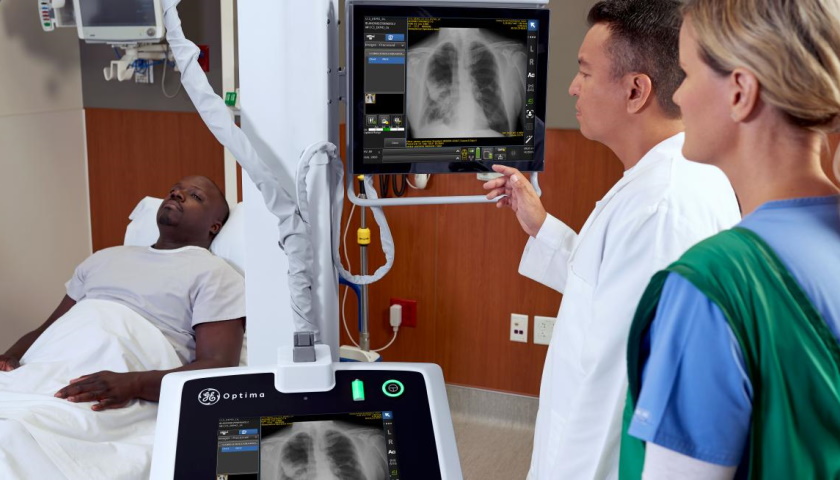FDA clears GE Healthcare AI algorithm for patient intubation

An artificial intelligence algorithm developed by GE Healthcare that helps with the placement of endotracheal tubes (ETTs) has been approved by the FDA.
The new tool – part of GE's Critical Care Suite 2.0 – helps bedside staff and radiologists assess patients before intubation – for example prior to ventilation in patients with critical COVID-19 – and make sure their ETTs are positioned correctly.
The algorithm, which according to GE is the first to be approved by the FDA for this application, is used on a mobile X-ray device.
It can help radiologists triage and prioritise cases, as well as automating processes that can help reduce review times for X-rays – which can take up to eight hours even if marked as urgent.
According to GE, anywhere from 5% to 15% of COVID-19 cases require intensive care surveillance and intubation for ventilatory support, and it has supplied around 200 hospitals in the US with the ETT systems over the past year under emergency use protocols.
Now, FDA approval means that it can continue to be sold outside of the public health emergency.
Using the AI, ETTs are automatically identified in chest X-ray images, providing feedback to the clinician on positioning within seconds and warning them if it hasn't been place correctly.
It will also quickly detect complications like pneumothorax, and can automatically send an alert to a radiologist along with the X-ray images for review.
"The pandemic has proven what we already knew – that data, AI and connectivity are central to helping front line clinicians deliver intelligently efficient care," said Jan Makela, chief executive of GE Healthcare's Imaging division.
Up to a quarter of patients who are intubated outside of the operating room have misplaced ETTs on chest X-rays, which can lead to hyperinflation of the lungs, collapsed lung (pneumothorax), cardiac arrest and death.
"Seconds and minutes matter when dealing with a collapsed lung or assessing endotracheal tube positioning in a critically ill patient," said Dr Amit Gupta, director of diagnostic radiography at University Hospital Cleveland Medical Centre in the US.
The algorithm has already shown its worth in COVID-19 cases, identifying cases of pneumothorax as well as barotrauma – tissue injury caused by a pressure-related change in body compartment gas volume, he added.
GE announced recently that it would break up into three businesses, with its healthcare unit expected to be spun off in 2023.












